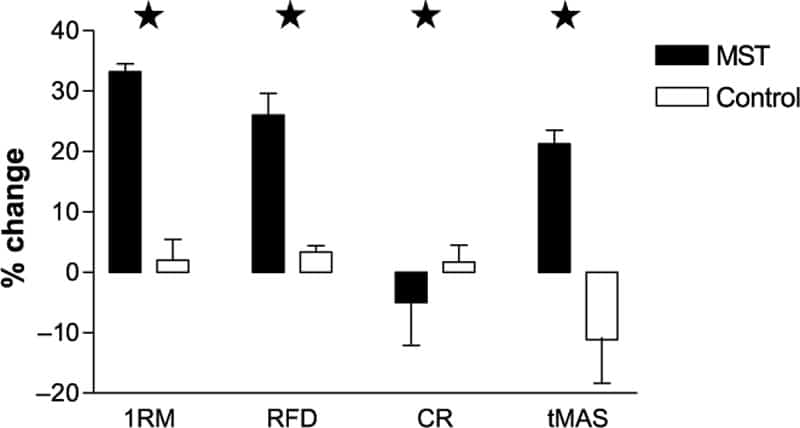For modern professionals, 5k runs have become a very convenient and fun way to feel fit. If you’re a beginner, 5K runs are excellent and can effectively improve your VO2max. Moreover, they also play a crucial role in improving running form and efficiency.
Since 5k runs are more comfortable to run than more grueling marathons, it’s easier for us to conjure up the motivation to get out of bed and hit the track. However, running these distances and races requires commitment. Runners must stick to a fitness plan to condition their bodies to achieve optimal performance.
If you have only recently forayed into the racing world, you must understand the importance of following a beginner 5k running plan. The right training plan will improve blood flow to the muscles. Boosting the blood flow is vital to allow the muscles to deliver nutrients and oxygen to the cells while you are running. Various exercises included in a training plan also stimulate the central nervous system. This stimulation allows the brain to increase the speed at which it sends signals to the muscles and activate more muscle fibers. Thus, a training plan conditions the mind to act quickly on new stimuli, which proves to be helpful during racing.
Table of Contents
Beginner 5K Running Plan

Week 1: Start by doing a 30-minute brisk walk session on day 1. On day 2, cross-train. On day 3, run half a kilometer and cool down by walking another half a kilometer. On day 4, rest or cross-train. On day 5, run a kilometer and cool down by walking for about half a kilometer. Rest on day 6. On day 7, run a kilometer.
Week 2: Brisk walk for 30 minutes on day 1. Day 2 should see you either resting or doing cross-training. On day 3, run a little over a kilometer and walk for about half a kilometer. Rest on day 4. On day 5, run one and a half kilometers and walk about half a kilometer. Rest on day 6.
Week 3: On day 1, brisk walk for 45 minutes. Devote day 2 to cross-training. On day 3, run one and a half kilometers and walk another half a kilometer. Cross-train on day 4. On Day 5, run one and a half kilometers and walk for half a kilometer. Rest on day 6.
Week 4: Start week four by brisk walking for 45 minutes on day 1. Keep day 2 for resting. On the third day, run for about 2 kilometers, followed by a kilometer-long walk to cool down the body. Keep day 4 for cross-training. On day 5, run for about 2.5 kilometers and walk another kilometer. Rest on day 6.
Week 5: Start week 5 with a 45-minute brisk walk session. Keep day 2 for resting. On day 3, run for 2.5 kilometers and cool down by walking another kilometer. Cross-train on day 4. On day 5, run for 3 kilometers and walk a kilometer. Keep day 6 for resting.
For beginners, five to eight weeks is the ideal time needed to prepare the body for a 5k run. Remember always to mix running with brisk walking sessions and do not add more than a kilometer to your longest run each week. On days you are resting, switch to cross-training exercises, such as yoga, swimming and the elliptical. The aim here is to allow your joints to heal while you continue to build up your fitness levels.
Intermediate and Experienced Runners Can Benefit Immensely from Strength Training and Lactate Threshold Training
As a beginner, you must have already become comfortable with the distance. However, if you haven’t yet conquered the speed/distance spectrum, it’s time to move to strength and lactate threshold training.
What Is Strength Training and How Does It Help Runners?
Strength training is the process of inducing resistance to exercises to stimulate muscular contraction. Strength training exercises involve slowly increasing the force output of muscles by gradually and continually increasing the weight used in various exercises. This form of training plays a pivotal role in building strength, muscles, and anaerobic endurance. Moreover, strength training, in general, promotes overall wellbeing and can be especially beneficial to runners. Studies have shown that performing 10 to 20 minutes of strength training each day allows runners to decrease the chances of injuries and race considerably faster.
Runners use their legs to propel themselves forward while running. Thus, intermediate and experienced athletes must have strong legs to build a solid foundation for high impact exercises like running. Moreover, runners must also have a strong core as abdominal and back muscles work together to stabilize the spine and strengthen the legs. Strength training provides a complete upper body, lower body, and core workout, allowing runners to enhance their running economy. This essentially means that endurance athletes who indulge in strength training can run longer distances without feeling drained or tired compared to endurance training alone.
In endurance exercises that require continual repetition, slow-twitch fibers are put to use. These fibers use aerobic metabolism to maintain contractions. Endurance training conditions skeletal muscle fibers to produce a higher number of mitochondria, known as mitochondrial biogenesis, in slow fibres but also fast-twitch fibers as well (Type 1, Type IIa and Type IIx respectively). This increased number of mitochondria leads to higher aerobic metabolism and thus, higher ATP production. Moreover, endurance exercises also enhance the quantity of myoglobin in cells, myoglobin is a red pigment that stores and supplies oxygen to the mitochondria within skeletal muscle.
Mitochondrial biogenesis is also accelerated in the brain as a response to general exercise, it is a topic we shall discuss in a future article.
This specific form of training also facilitates new capillary growth around slow-twitch fibers through a process called angiogenesis. These capillary networks play the critical roles of supplying oxygen, as and when needed by the body while running, and getting rid of the metabolic waste produced in the body. Runners and all athletes must, therefore, include endurance training exercises to develop highly functional slow muscle fibers. Moreover, endurance exercises also strengthen the tendons and ligaments, both of which are used continuously while running.
A 2011-study revealed that concurrent strength and endurance training improved 45-minute endurance capacity by 8%. This can primarily be attributed to the fact that strength training leads to an increased number of muscle fibers as well as enhanced maximum voluntary contraction and rate of force development. Therefore, if you are someone who aims to progress from 5k to longer runs, strength training makes sense.
What Is Lactate Threshold Training and How Does It Help Runners?
The body uses lactic acid or lactate as a source of energy. When you are running, the body breaks down glucose to produce energy. Lactate or lactic acid is produced as a by-product during the process of glucose breakdown via glycolysis. The body can convert this lactic acid into energy when a person is running slowly. However, when a person begins to run fast, the body starts to demand more energy. This leads to increased lactic acid production. The body is then unable to convert this excess lactic acid into energy. This point, when the body fails to convert lactate into energy and expel any waste product is referred to as the Lactate Threshold. The excess lactate flows into the blood and reduces the strength of the muscles, thereby stopping runners from reaching their optimal speed and efficiency.
Lactate threshold training is of utmost importance as lactate buildup is the real reason why most intermediate and experienced runners begin to slow down towards the end of a race. Lactate threshold training is essential to push one’s lactate threshold and thus, allows one to reach their optimal performance.
For an example of someone reaching their lactate threshold, check out the video below 👇
Sample Strength Training Program for Runners
The strength training workout for runners mentioned below will allow runners to build endurance and strength without gaining significant and unnecessary lean body mass. For runners, building strength for endurance is a must.
For your lower body, perform three sets of 15 squats on alternate days, followed by three sets of ten lunges on both sides. Also, perform three sets of wall quad sit. While performing wall quad sits, try to hold the upper body for about 45 seconds during each rep. Also, include three sets of ten heel raises and two sets of ten toe raise in your exercise routine.
To strengthen your core, do front planks each time you do strength training exercises and hold each plank for 60 to 90 seconds. The front planks should be followed by 60- to 90-second-long side planks. Besides the planks, also try to do 12 bird dogs, 50 push-ups and ten superman abs. Finish with reverse crunches. These endurance training exercises will prepare your core for the actual marathon.
The strength training program is for runners who have crossed the beginners’ level and whose bodies have already been conditioned for strenuous training. Some of you may find this plan challenging to adhere to. However, with time and commitment, you will be able to come to terms with this strength training program.
A 2008 study looking at experienced runners found that strength training 3 times per week for 8 weeks improved their running economy at 70% HR/VO2 max by 5% and their time to exhaustion at maximal aerobic speed by 21.3%. These improvements were made with no significant increases in body weight. More endurance at the same weight.

A more recent review in 2014 of 26 studies found that all but one study showed significant improvements in endurance performance after a brief period of strength training integrated into their routines. For runners in particular: “In runners, improvements were found in time-trial performance, economy, VO2 max and vMART (muscle power) after a strength training intervention.”
Sample Lactate Threshold Training Program For Runners
If you are serious about advancing in your 5k run journey, following a lactate threshold training program is extremely important. Follow this simple plan to boost your lactate threshold.
To boost your lactate threshold for the low-end zone, i.e., the start of a marathon, run for 10 to 30 minutes at a comfortable pace each day. Next, increase your speed and run for another 45 to 90 minutes. Cooldown the body by running for another 10 to 30 minutes at an easy pace.
To enhance your middle-zone lactate threshold, stick to tempo runs. Tempo runs are performed at speed about 25 to 30 seconds per mile slower than your actual 5k run speed. The overall duration of the tempo runs should not exceed 20 to 40 minutes. Moreover, always remember to start with a warm-up and follow the tempo runs with a cool down.
To prepare your body for the last stretch for the long run, perform tempo intervals. Tempo intervals refer to tempo runs performed with a recovery interval in between. The recovery interval should not exceed one-fourth of the length of the actual repeat.
Putting It All Together
Running a long race isn’t easy, nor should it be. Strength training and lactate threshold training programs are requisites for moving beyond the shorter 5K races as they play a pivotal role in allowing runners to reach new distances and finishing first place.
Bonus Video
Retired Navy Seal, US Army Ranger, and member of the US Air Force, David Goggins, overcame obesity and completed a 135 mile Badwater race with a yet to be discovered atrial septal defect. He achieved all of this with only 75% use of his heart. Goggins strength trains twice per day, as a former powerlifter, he is still able to deadlift 400lbs.
- Goggins, David (Author)
- English (Publication Language)
- 364 Pages - 03/10/2020 (Publication Date) - Lioncrest Publishing (Publisher)
Check out his technique in the video below 👇
Frequently Asked Questions
How long does it take to train for a 5km?
Five to eight weeks is a good amount of time for an average individual. If you haven’t run for years and are sedentary and overweight then we advise you take even longer. If you’re consistently exercising then this time may be realistic or even quicker.
How do I train for a 5k fast?
The only shortcut is consistency. If you’re focusing on hitting that 5,000-meter distance you need a goal, you need a plan, and everything outlined in this article will help get you there. The other side of the coin is your diet. Ensure you are eating the right foods and supplements like whey protein to allow your muscles to recover quickly.
How many days strength training should a runner do?
The short answer is at least 2 days a week. An experienced runner will want to focus at least 60%+ of their efforts actually running. The remaining time should be spent training the tertiary muscles in the form of strength training, self-myofascial release (SMR) with a foam roller, and stretching. For a less experienced runner, you can afford to conduct more stretch training while your legs muscles, calves, and hips especially, get comfortable with hitting the track.


